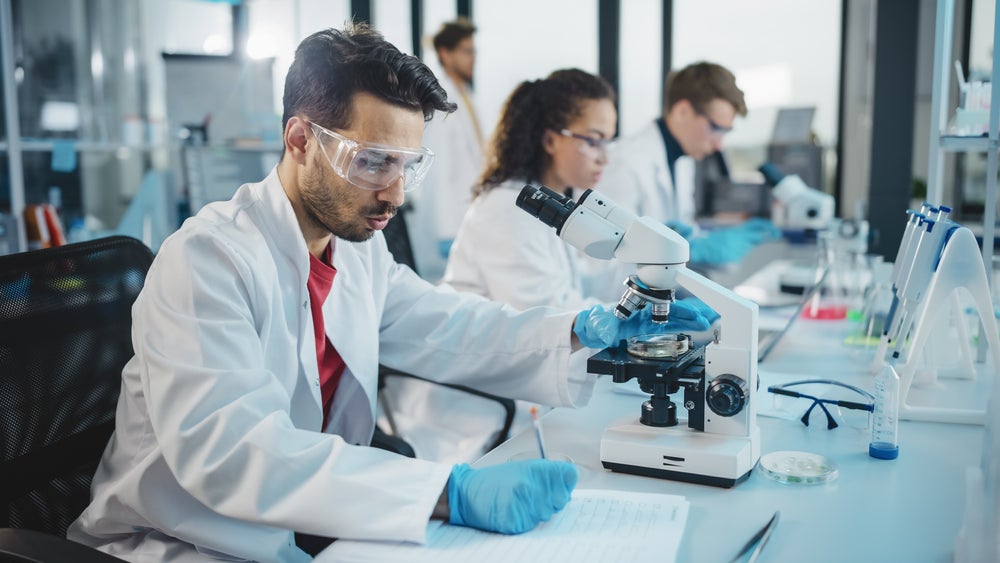At the American College of Cardiology’s 74th Annual Scientific Session in Chicago, results were reported in a late-breaker trials session on Biocardia’s Phase III CardiAMP autologous cell therapy trial for the treatment of heart failure with reduced ejection fraction (HFrEF) patients.
The study was a randomised (3:2), double-blind control procedure US trial, stratified by clinical site and cardiac resynchronization therapy (CRT) and focused on patients whose cells met prespecified cell population thresholds based on previous studies. The development of stem cell therapies for cardiovascular and pulmonary diseases is increasing due to the regenerative potential of these cells to reverse the harm caused by problems such as chronic inflammation and infarction. Key opinion leaders (KOLs) interviewed by GlobalData have stated that although the use of cell therapies in cardiovascular disease is promising and has been demonstrated to be efficacious and safe in trials, the significant limiting factor to market uptake is the high cost of treatment and the very niche patient population that fits the necessary treatment criteria.
In this Phase III trial, key inclusion criteria for patients included chronic ischemic heart failure with reduced ejection fraction (HFrEF) with left ventricular ejection fraction (LVEF) ≥20% and ≤40%, New York Heart Association (NYHA) class II or III on maximally tolerated guideline-directed medical therapy (GDMT)/device therapy, six-minute walk test (6MWT) of >100 meters and ≤450 meters, and a flow cytometry-based cell population analysis. Key exclusion criteria included an estimated glomerular filtration rate (eGFR) <30ml/min/1.73m2, hematocrit <30%, white blood cell (WBC) <4,500/μl, and platelet count <100,000μl; INR >1.5 not due to reversible cause, left ventricular (LV) thrombus, severe mitral or tricuspid regurgitation, mechanical aortic valve, heart constriction device, aortic stenosis/insufficiency. Patients could not have peripheral arterial disease that would impact the feasibility or safety of the study intervention or have evidence of a clinically significant arrhythmia within the past 60 days.
The use of allogenic stem cell therapy as an approach to treating patients with ischemic heart failure selected for favourable cell characteristics (62% of the population) was safe, but this study did not meet its primary efficacy outcome using the 6MWT. The safety outcomes for the study showed no procedure-related all-cause death, stroke, systemic embolism, or need for open cardiac surgery or major endovascular surgical repair at 30 days for any of the patients in the study. The occurrence of all major adverse cardiovascular events (MACE) for the allogenic cell therapy patient group was 20.3% compared to 31.7% for the control group. There were favorable outcomes in additional analyses using quality of life as a composite endpoint: all patients enrolled in the study, WR = 1.39; p = 0.140, patients with elevated NTproBNP or BNP: Minnesota Living with Heart Failure Questionnaire (MLHFQ): WR = 2.04; p = 0.020 and 6MWT: WR = 1.61; p = 0.074. The results over the two-year study suggest that autologous mononuclear cells processed and delivered intramyocardially, as in the CardiAMP HF trial, may be beneficial for patients with chronic ischemic HFrEF on stable GDMT with elevated NTproBNP/BNP.
Biocardia has developed commercially scalable manufacturing for these cell therapies, which improves the likelihood of the therapy being available on demand for patients with acute cardiac injuries resulting from HF. Biocardia’s strength in its ability to scale manufacturing processes goes further with the recent investigational new drug (IND) it filed for PulmALLO MSC for acute distress, making the company a likely market leader in advanced therapeutic medicinal products (ATMPs) for cardio-pulmonary diseases. GlobalData predicts that although setbacks to meeting the primary outcomes of this trial in relation to the 6MWT occurred, Biocardia remains well-positioned to be the market leader in the cardiac cell therapy space and that the company’s ability to regenerate myocardial tissue is a very promising novel treatment approach.

US Tariffs are shifting - will you react or anticipate?
Don’t let policy changes catch you off guard. Stay proactive with real-time data and expert analysis.
By GlobalData




